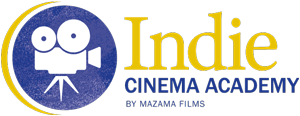The Power Of X
A simple yet powerful lighting technique anyone can master in under a minute.
A simple yet powerful lighting technique anyone can master in under a minute.
Length: 10:26 minutes
Download Video:
** You must be an Advanced Access member or higher for this video download. **
For information about downloads: FAQ downloads

Life on set can be stressful and hectic no matter what size production you are working on. But did you know there are 5 simple things that you can do to get yourself more work, prevent mistakes, and make the post production process easier for you- or for the post team who handles your footage? The 5 tips I’m about to share- will help you to set yourself apart as a professional.

You must be logged in to post a comment.
This site uses Akismet to reduce spam. Learn how your comment data is processed.
This site uses cookies. By continuing to browse the site, you are agreeing to our use of cookies.
AcceptHide notification onlySettingsWe may request cookies to be set on your device. We use cookies to let us know when you visit our websites, how you interact with us, to enrich your user experience, and to customize your relationship with our website.
Click on the different category headings to find out more. You can also change some of your preferences. Note that blocking some types of cookies may impact your experience on our websites and the services we are able to offer.
These cookies are strictly necessary to provide you with services available through our website and to use some of its features.
Because these cookies are strictly necessary to deliver the website, refusing them will have impact how our site functions. You always can block or delete cookies by changing your browser settings and force blocking all cookies on this website. But this will always prompt you to accept/refuse cookies when revisiting our site.
We fully respect if you want to refuse cookies but to avoid asking you again and again kindly allow us to store a cookie for that. You are free to opt out any time or opt in for other cookies to get a better experience. If you refuse cookies we will remove all set cookies in our domain.
We provide you with a list of stored cookies on your computer in our domain so you can check what we stored. Due to security reasons we are not able to show or modify cookies from other domains. You can check these in your browser security settings.
We also use different external services like Google Webfonts, Google Maps, and external Video providers. Since these providers may collect personal data like your IP address we allow you to block them here. Please be aware that this might heavily reduce the functionality and appearance of our site. Changes will take effect once you reload the page.
Google Webfont Settings:
Google Map Settings:
Google reCaptcha Settings:
Vimeo and Youtube video embeds:
You can read about our cookies and privacy settings in detail on our Privacy Policy Page.
Privacy Policy
Good tips. I disagree with two:
– A professional shoot has a sound recordist; that person listens to the camera audio. Having the camera operator listen to the audio is like having the caterer operate the boom mic. No sound recordist? Very risky: the chances of the project’s success diminish by about 10-50%. In my opinion, disregarding failure is unprofessional.
– When you cut between two different takes of a shot that are framed differently, the movie feels disjointed and out of control, which may or may not work with your story. The framing, like the meaning of the movie, should be intentional (even if you intend for it to feel accidental). The key to reframing during a take is to hide the movement in the movements of the actor/subject, working with the story instead of against it.
Thanks. 🙂
I appreciate your disagreement / critique.
In principle I completely agree with your disagreement. However, there are principles / best practices and then there are the realities of todays production life…
I always push for a sound recordist- that is how you get great sound. As a cinematographer, that isn’t something I should be focusing on. Agreed. 🙂 The reality is that there are many professional shoots that I go on (corporate gigs for companies like Autodesk, WebTrends, etc.) where for one reason or another there isn’t a sound recordist on the shoot, despite my recommendations. (And unfortunately, these days this seems to be getting more common…)
As I see it there are three things I can do about this: 1. Pass on the project, and let someone else who can do it take it. 2. Take the project, not worry about the audio, & then have the production see me as the “failure” and not get hired again. 3. Make my recommendations, relay my concerns and the potential problems of the approach, then show up and do the best I possibly can. (Assuming that the project is within my scope of capabilities.)
For myself, Options #1 and #2 are not practical. They do not help you build trust with the production, and they also result in lost business. The benefit of Option #3 is that it allows me to build trust with the production, so that when I do really have to put my foot down and say “this is not going to be possible” (like a multi-person interview) they listen.
In regards to you critique on the framing, I think we are on the same page (or saying similar things) just coming at it from different angles. as I mentioned in the video:
“Of course, as with every rule- there are times where you can break it and get away with it, and this is true with reframing. But I’ll have to cover that in a separate video.”
What I am talking about in this video is reframing mid-shot in such away that it ruins the shot. Story and performance are more important than perfection in framing. I’ve seen a lot of people who are starting out reframe mid-shot in a less than elegant way, which becomes distracting. It would have been better to leave it and let the performance “hide” the error, than to call attention to itself.
Of course, I’m talking about minor framing issues- not completely blowing it…
I agree: your advice to listen to the sound is very good advice for those doing one-man-band shoots.
In my youth, as a camera assistant, I was taught to murmur “FAST” to myself before turning on the film camera: Focus, Aperture, Shutter (angle), Tachometer (fps). If any of the things on that checklist weren’t proper, I didn’t turn on the switch. These days, if I’m the camera operator and even when working with a professional crew, I think “color sounds FAST” before turning on the switch: is the color temperature correct? Do I see sound (which only tells me if the cable’s connected) or, as you suggest, hear it? Etc.
However, I have almost never converted a non-professional company (that disregards quality) into a professional company with good advice. People don’t know what they don’t know and don’t change things that work for them. Low quality works for most media these days, even from companies with brand names.
I whole heartedly agree that story & performance are more important than perfection in anything else that I’m doing in camera operating and lighting, etc. Most of our tweaks are only important if the performance and/or story need help. I’ll happily stay stuck a poorly framed shot if the performance doesn’t motivate a correction and is otherwise compelling. That’s the take that they’ll use, anyway.
That is a great point about converting a non-professional company- it is tough to do, no argument there. Maybe I’ve been lucky with my career – my experience. I have been able to convert a couple of productions by doing what I’ve suggested, and they now scale accordingly.
I think the trick has been my willingness to not set myself up for failure. If the job is outside of my capabilities (like they want a multi-person interview with lavs & boom) I’m more then willing to make my recommendations, and then not take the project if those recommendations are not followed. Inevitably, the job goes to someone who thinks they can do it all, it fails, and then guess who gets the call for the next job? Me- but going forward they always listen to my recommendations. 🙂
Yep- I love “FAST” I remember that when I was just starting out, which was just when digital began to gain a bigger foot hold. (1998) I like your “Color Sounds FAST” approach- that is a much more elegant way of doing / saying it. My method / thinking has been “SEFF”. Starting with the back of the camera moving forward: Settings (everything menu driven); Exposure (on the lens); Focus; Filtration.
Thanks for the tip on “Color Sounds FAST” I’m going to have to start using / explaining it that way over my “SEFF” method. 🙂
Hi I’m just starting out, these tips are great! Great efforts! THANKS! But one thing I want to suggest, hope you don’t mind, is maybe it’s better to retake when you start to talk a little “off” when reading the script. And speed it up a little.
For me, I always speed up tutorial videos on YouTube to save time. But Vimeo doesn’t have that, so narration has to be in a perfect speed. Especially for poor people like me who’s considering paying for the membership, I’d really like to see perfect samples to convince myself before investing. If audience missed something they can always go back. As a student, I’d love the instructors to speak reasonably fast, so I’m forced to concentrate more.
Hope this helps. 🙂
Thank you for your suggestions. This is one reason why we added the transcript section, so you can read through the lesson as fast as you want. We are planning on adding these free lessons to our YouTube channel too, so you’ll be able to speed it up like you mentioned.